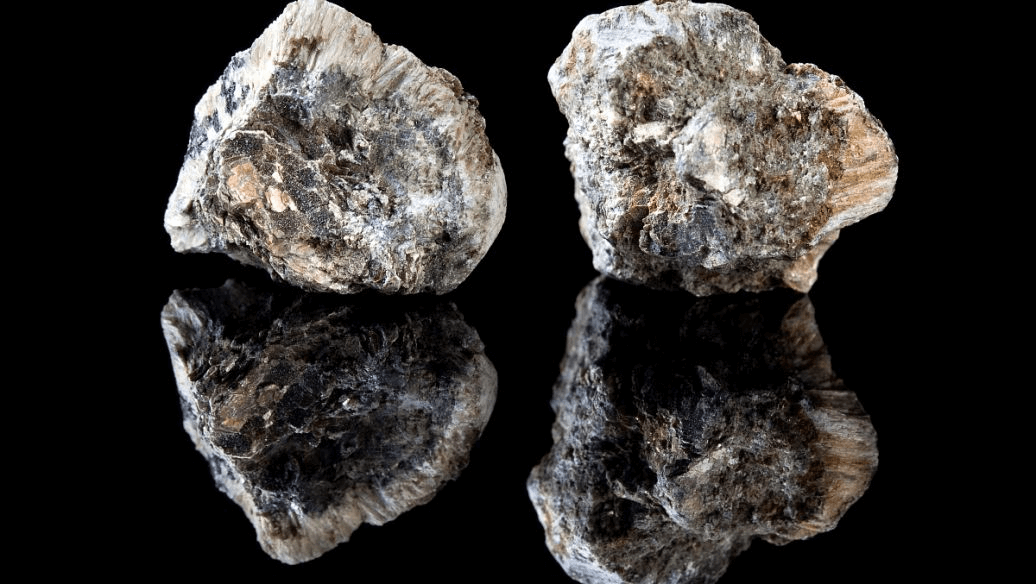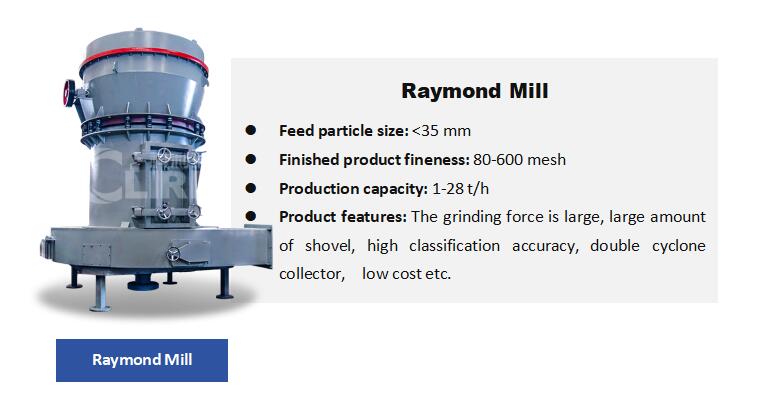For product information and pricing, Chat with sales agent:
or email us : sales@clirik.com
Click links below to see related products.

CLIRIK Raymond mill for iron ore is a type of grinding mill used to grind materials into extremely fine powder for use in mineral processing industries. In the context of iron ore processing, a Raymond mill can be used to grind iron ore into fine particles, making it easier to separate and process.


The output size of iron ore processed by a Raymond mill can vary, but typically it can produce fine particles ranging from about 80 to 600 mesh (approximately 180 micrometers to 25 micrometers). The specific particle size achieved depends on various factors including the settings of the mill, the characteristics of the raw ore, and the grinding parameters.
l Grinding Roller: Cylindrical components that roll against the inner surface of the grinding ring.
l Grinding Ring: A circular band that the rollers roll against to crush and grind the ore.
l Classifier: A device to control the particle size of the output.
l Plow Blades: Positioned under the rollers, they lift the ore from the mill base to the grinding rollers.
l Central Shaft: Connects the roller assembly and the grinding ring.
l Fan: Creates airflow to move the finely ground material through the mill and classifier.
l Crushing: Raw iron ore is crushed using a jaw crusher to a suitable size.
l Feeding: The crushed iron ore is fed into the Raymond mill hopper by a feeder.
l Grinding: The ore is ground between the grinding rollers and the grinding ring. As the rollers roll over the ore, they grind it into fine particles.
l Classification: The ground material is lifted by the airflow created by the fan and passed through the classifier. The classifier separates the fine particles from the coarse ones.
l Collection: Fine particles are collected in a cyclone collector, while coarse particles are sent back for further grinding.
l High Efficiency: Raymond mills are designed to produce fine, consistent particle sizes, which is essential for the subsequent beneficiation process.
l Energy Efficiency: Compared to other grinding mills, Raymond mills consume less energy.
l Versatility: Capable of handling various types of materials, including iron ore, with different hardness levels.
l Low Maintenance: Simple design and fewer moving parts result in lower maintenance costs and easier operation.
l Cost-Effective: Lower initial investment compared to other milling equipment and low operational costs.
The Raymond mill can be used for initial grinding of iron ore to produce a fine, consistent particle size before further beneficiation steps.
Preparation for Concentration:
The finely ground ore produced by the Raymond mill is suitable for magnetic separation, flotation, or gravity separation processes to concentrate the iron content.
Before the pelletizing process, the Raymond mill ensures the iron ore is ground to the required fineness to form high-quality pellets.
1. Crushing: Iron ore is initially crushed by jaw crushers or other primary crushers.
2. Feeding: The crushed ore is fed into the Raymond mill for grinding.
3. Grinding: The Raymond mill grinds the ore to a fine powder.
4. Classification: The classifier separates fine iron ore particles from coarse ones.
5. Collection: Fine iron ore powder is collected for further processing.
6. Concentration: The fine powder is then subjected to various concentration methods to increase the iron content.
7. Pelletizing/Sintering: The concentrated iron ore is pelletized or sintered for use in blast furnaces or direct reduction processes.
l Ore Characteristics: The hardness, moisture content, and particle size of the raw iron ore will affect the efficiency and output of the Raymond mill.
l Operational Parameters: Adjusting parameters like grinding pressure, feed rate, and classifier speed can optimize the grinding process and product fineness.
l Maintenance: Regular maintenance is essential to ensure the smooth operation of the Raymond mill and to avoid downtime.
Using CLIRIK’s Raymond mill for iron ore processing can significantly improve the efficiency and effectiveness of the grinding stage, making it an essential component in the iron ore beneficiation process.
